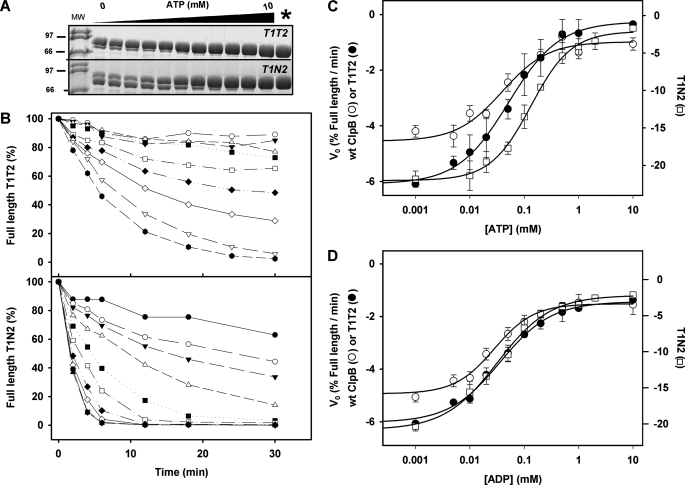FIGURE 4.
ATP, but not ADP, binding to NBD2 regulates the affinity of NBD1 for the corresponding nucleotide. A, shown are representative gels of partially digested T1T2 (upper) and T1N2 (lower) in the presence of increasing ATP concentrations, obtained after 10 (T1T2) and 4 (T1N2) min incubation with thermolysin at a chaperone/protease ratio (w/w) of 135. B, shown are kinetics of the proteolysis of 5 μm T1T2 (upper panel) or T1N2 (lower panel) by thermolysin at increasing ATP concentrations and a chaperone/thermolysin ratio (w/w) of 135. Samples were incubated at 25 °C, and the time dependence of the reaction was analyzed by 15% SDS-PAGE. The amount of full-length protein protected against proteolysis was estimated by densitometry using the value obtained in the absence of protease as 100%. C, shown is the initial proteolysis rate of WT ClpB (○) and mutants T1T2 (filled circle) and T1N2 (□) in the presence of increasing concentrations of ATPγS (WT ClpB) and ATP (T1T2 and T1N2). Analysis with the Hill equation (solid lines) gives the Kd and Hill coefficient values shown in Table 4. D, experimental procedures were as in C, in the presence of ADP. Experimental conditions were as detailed in B. The solid lines correspond to data analysis with the Hill equation. Data are the means ± S.D. (n = 2–3).

